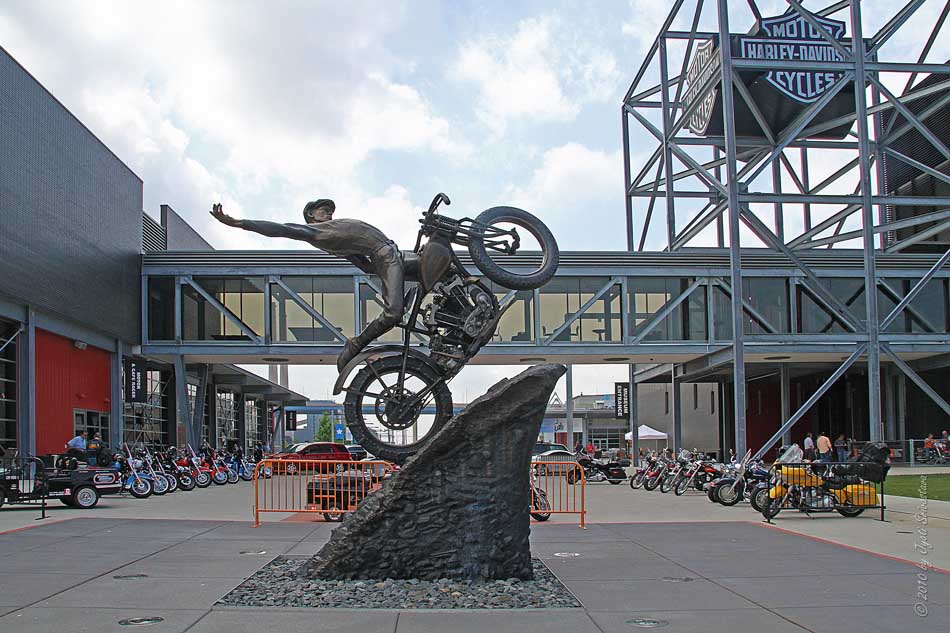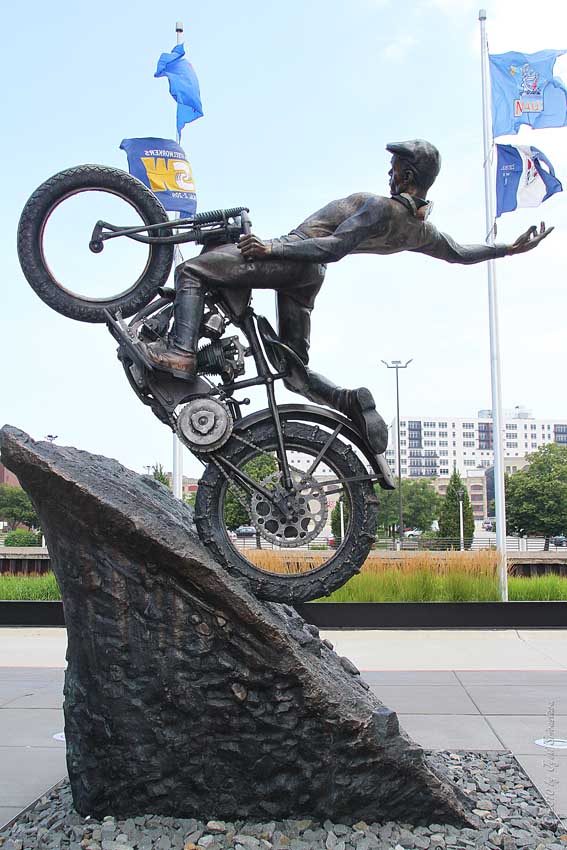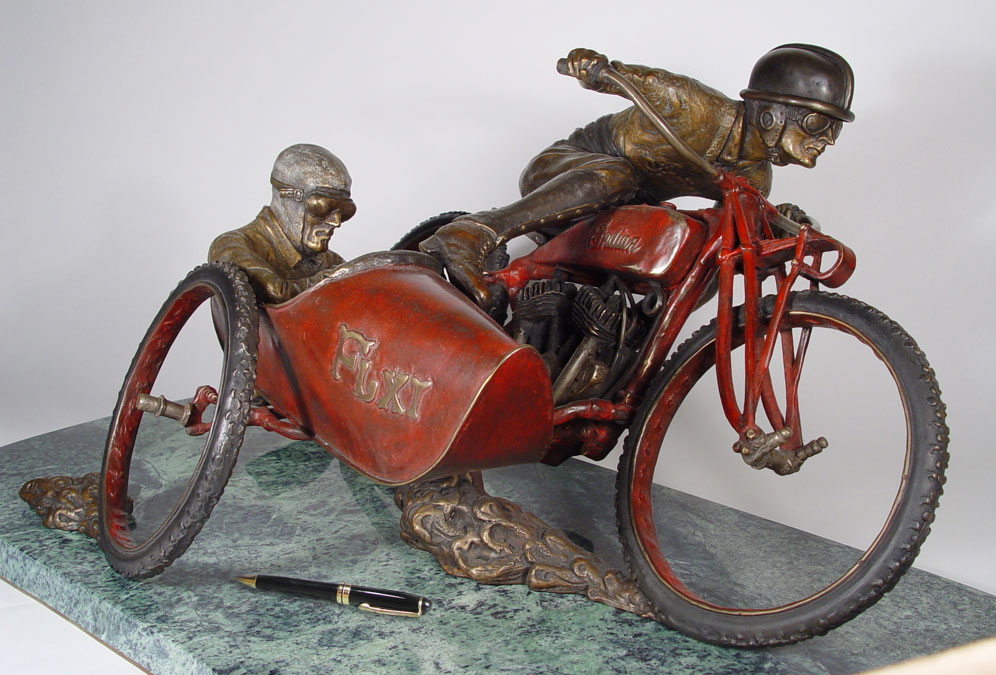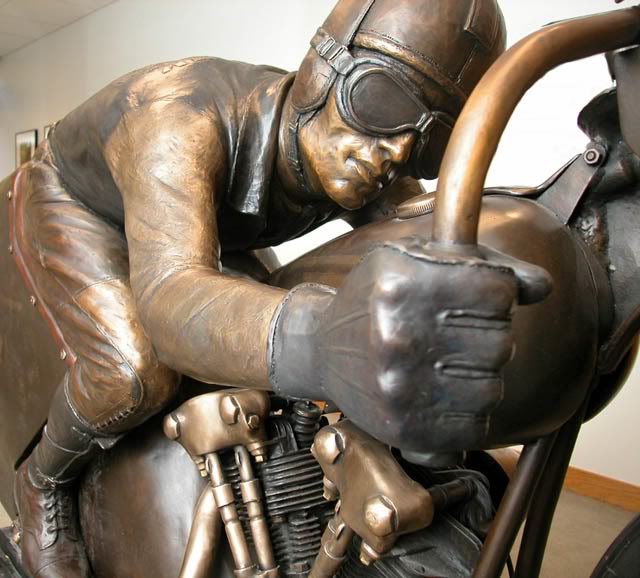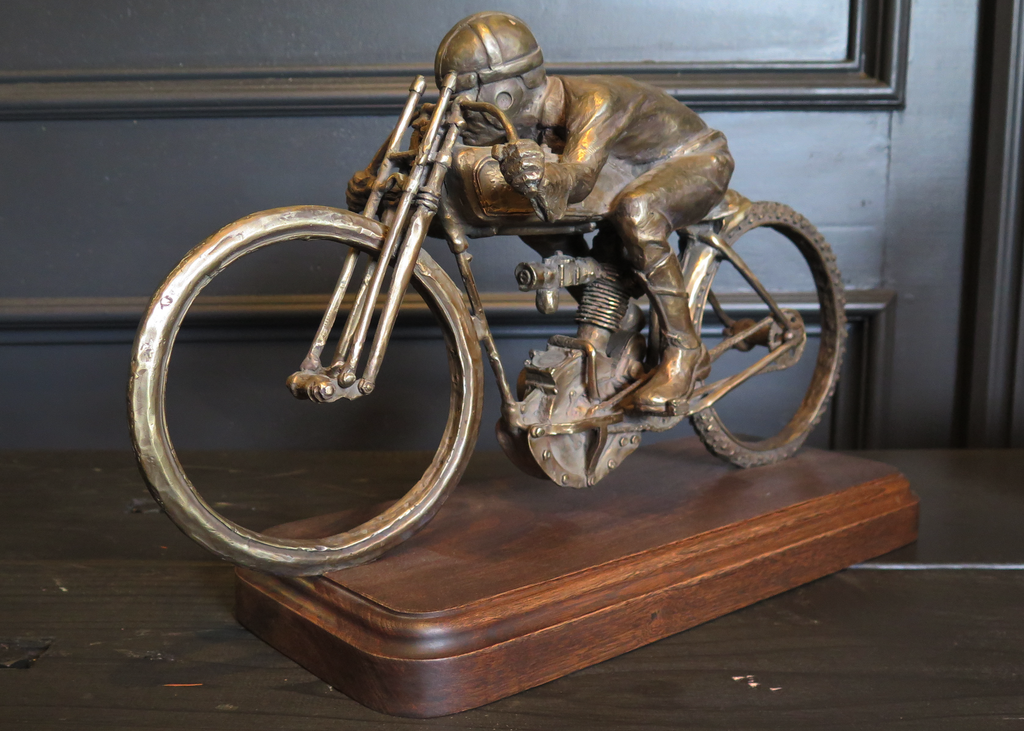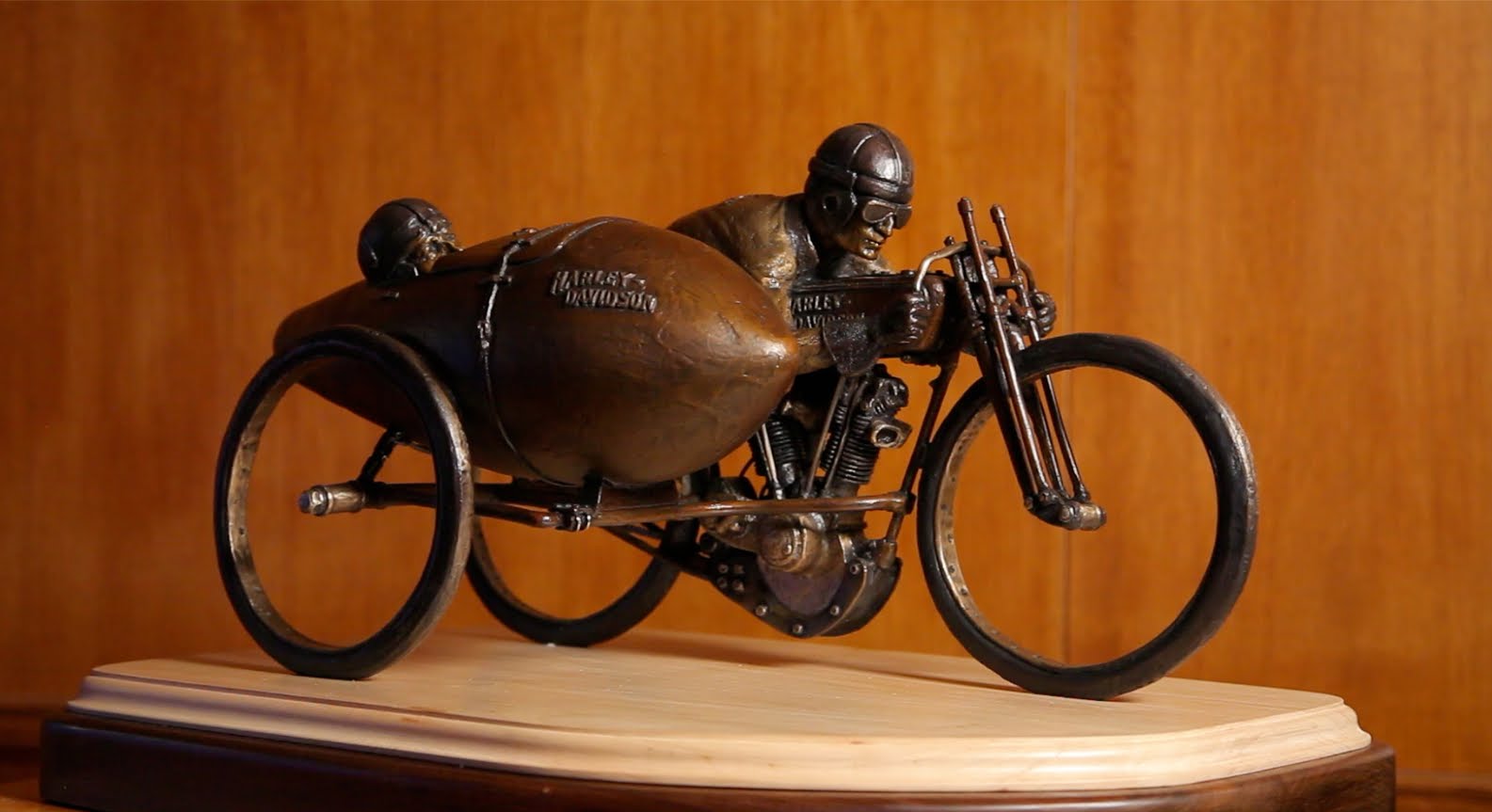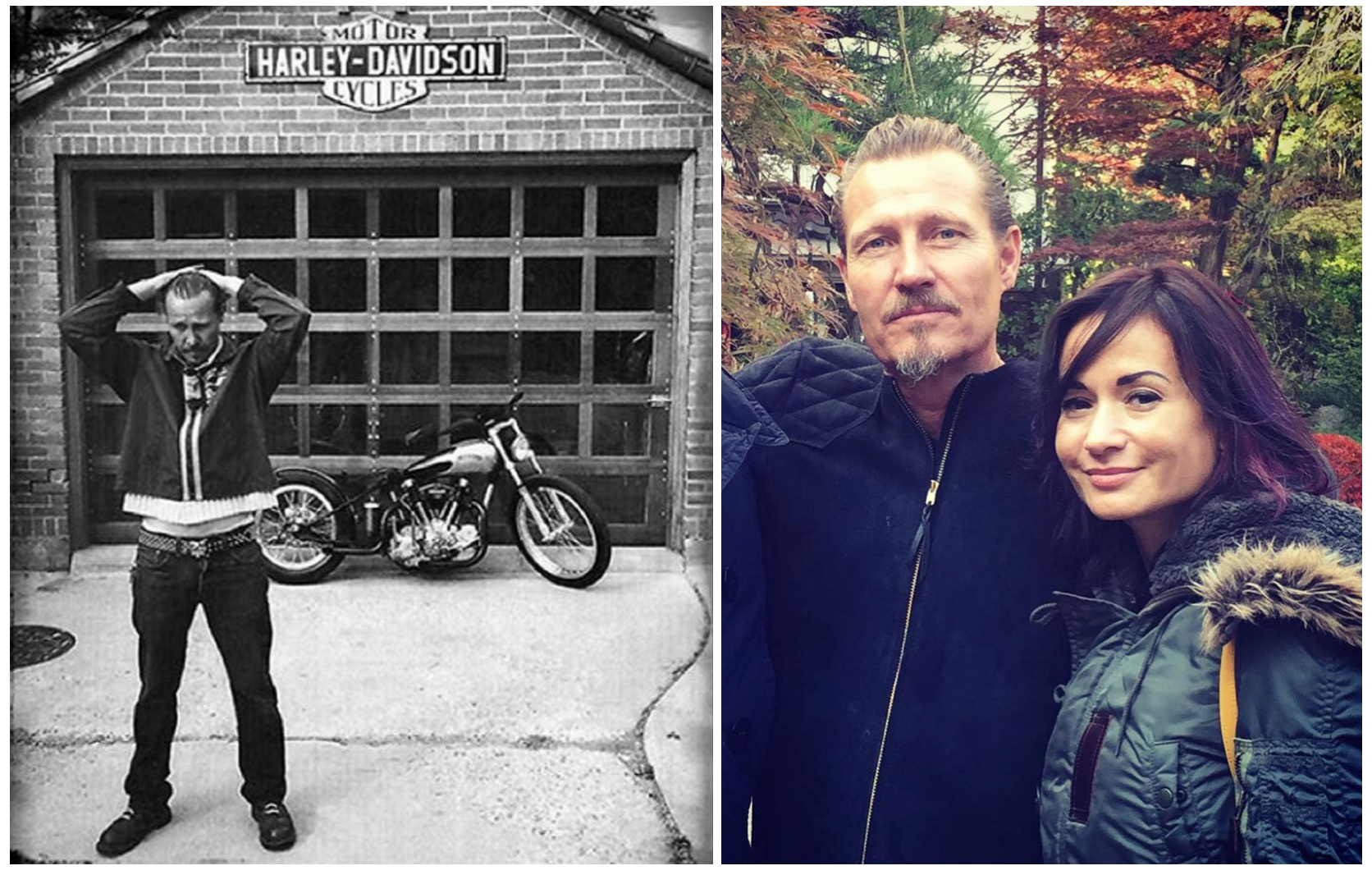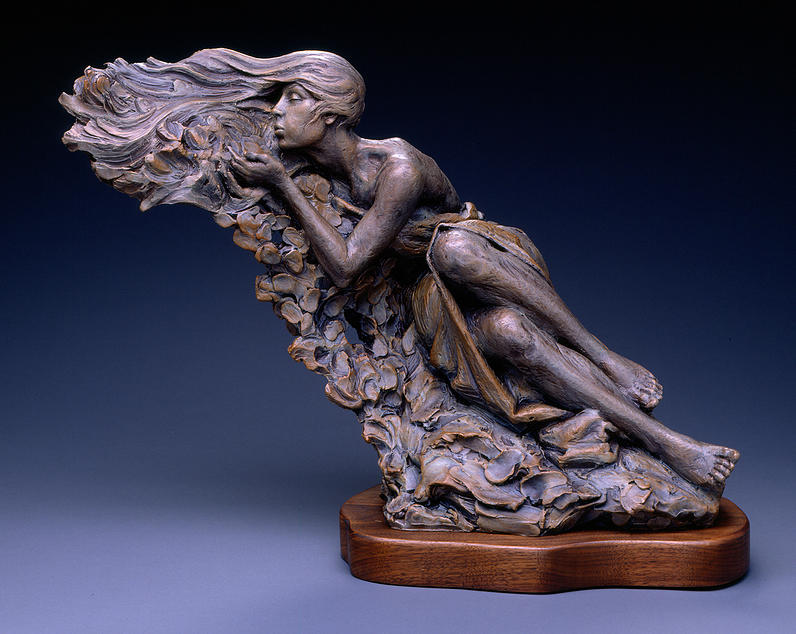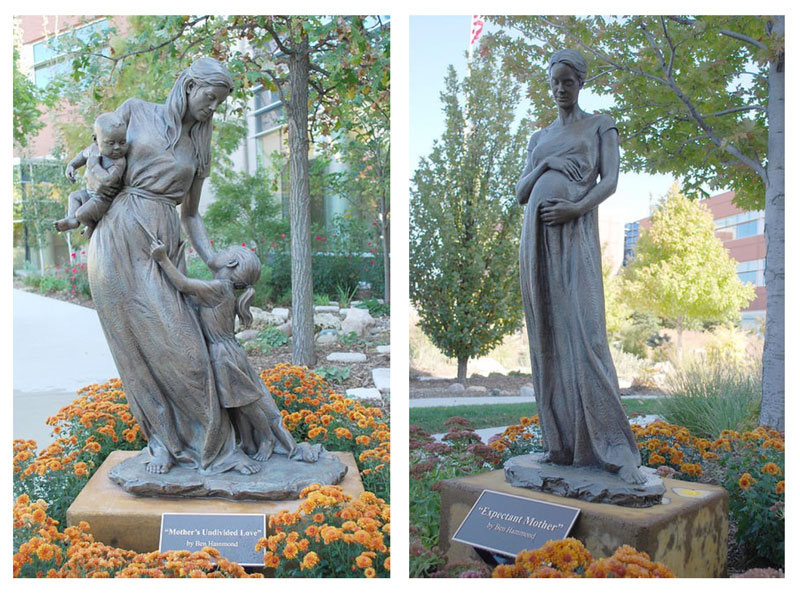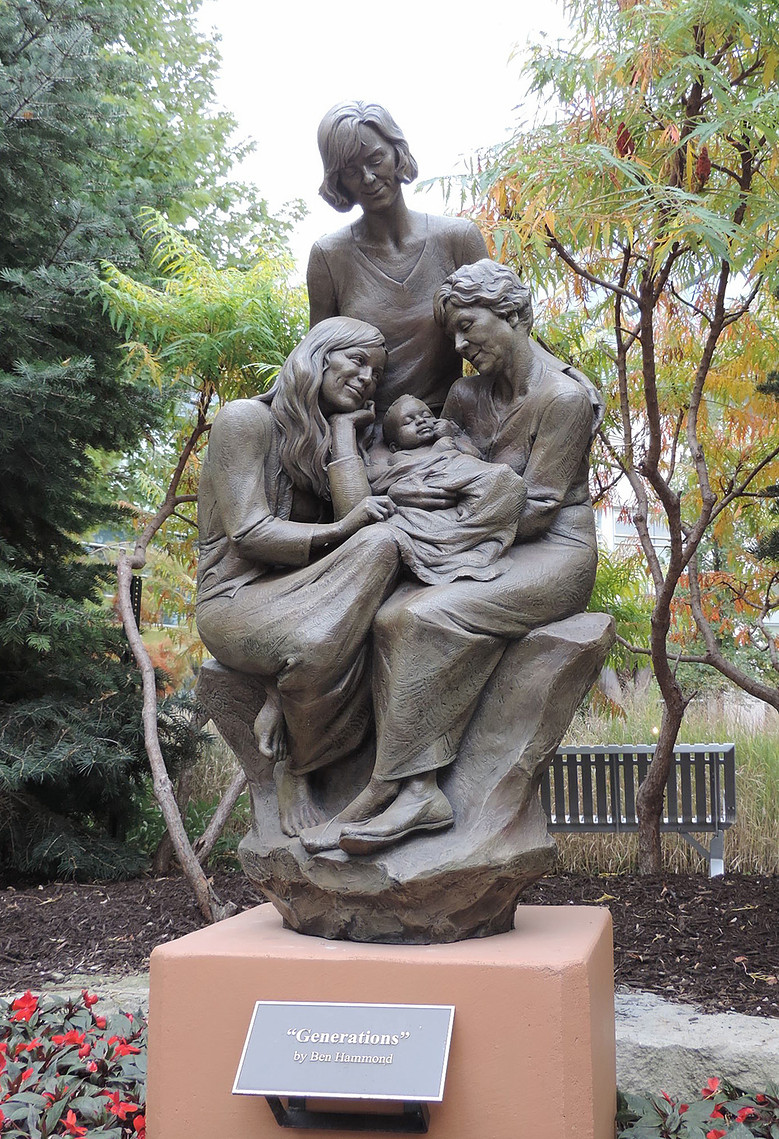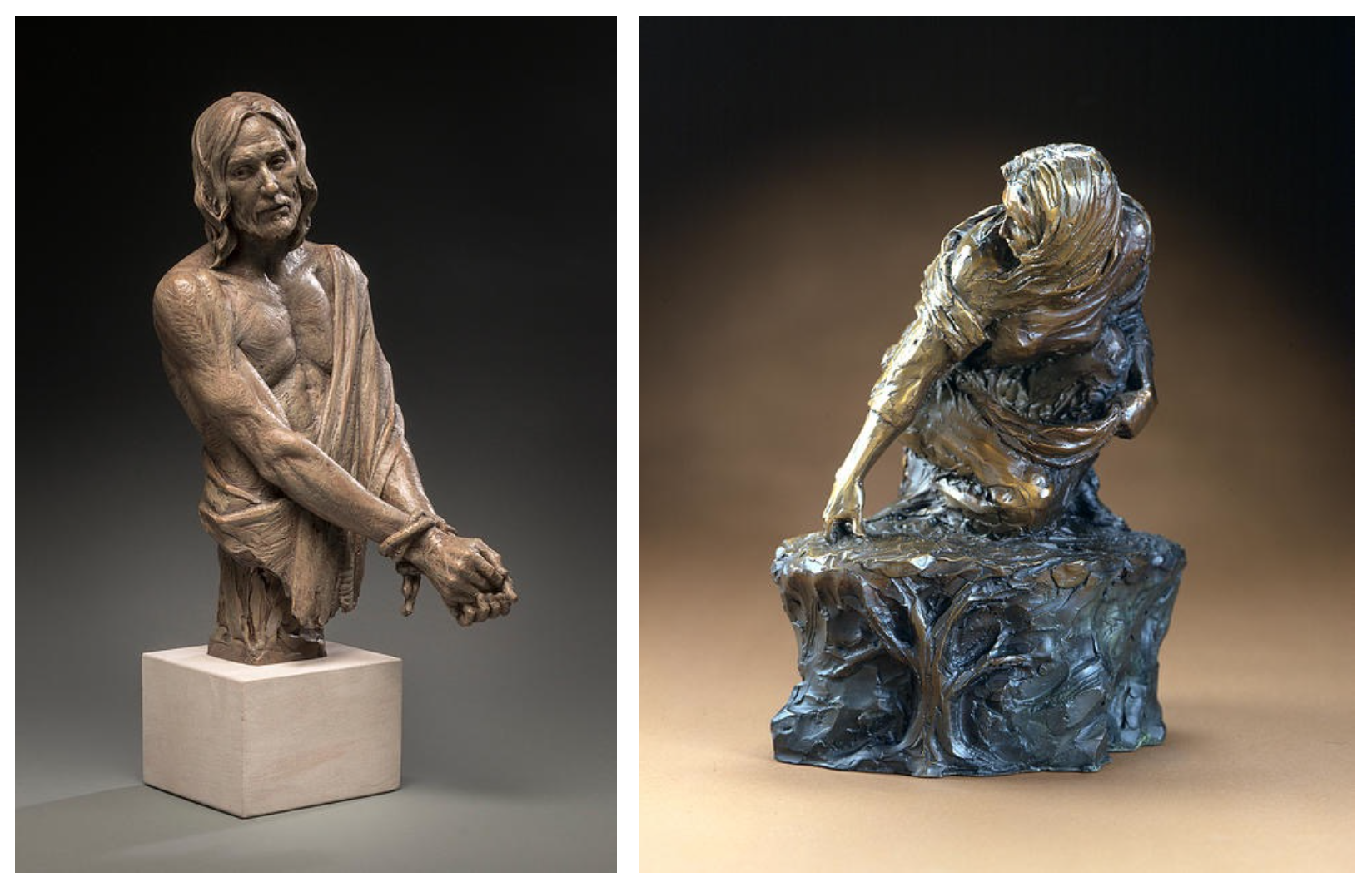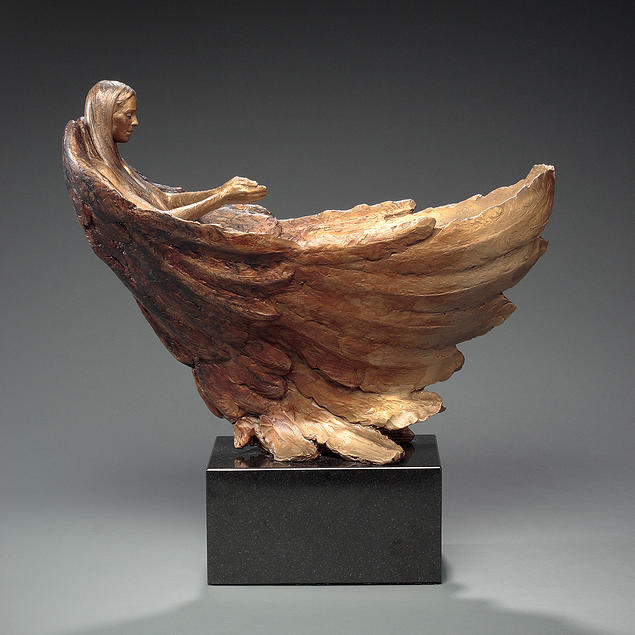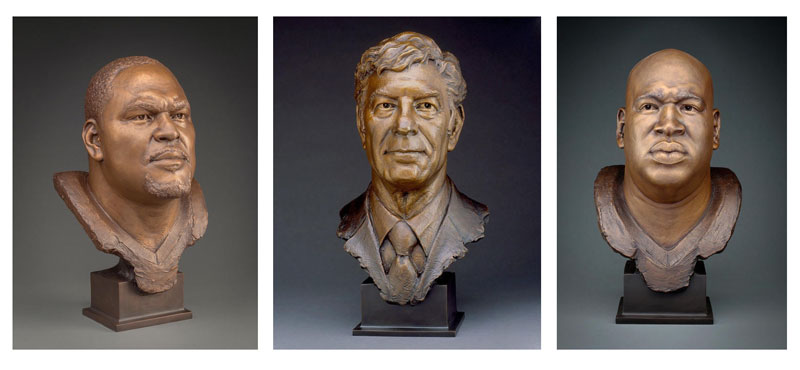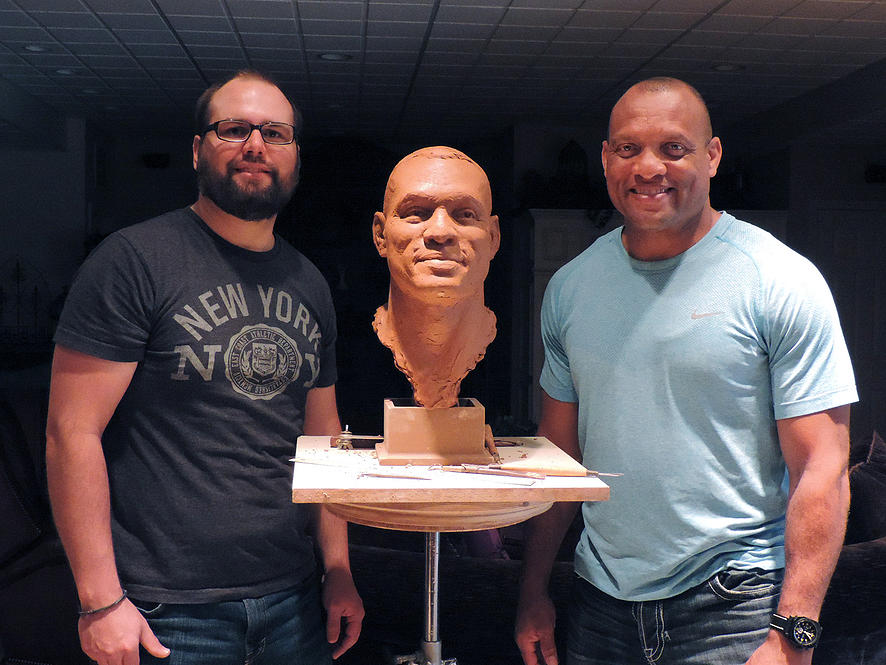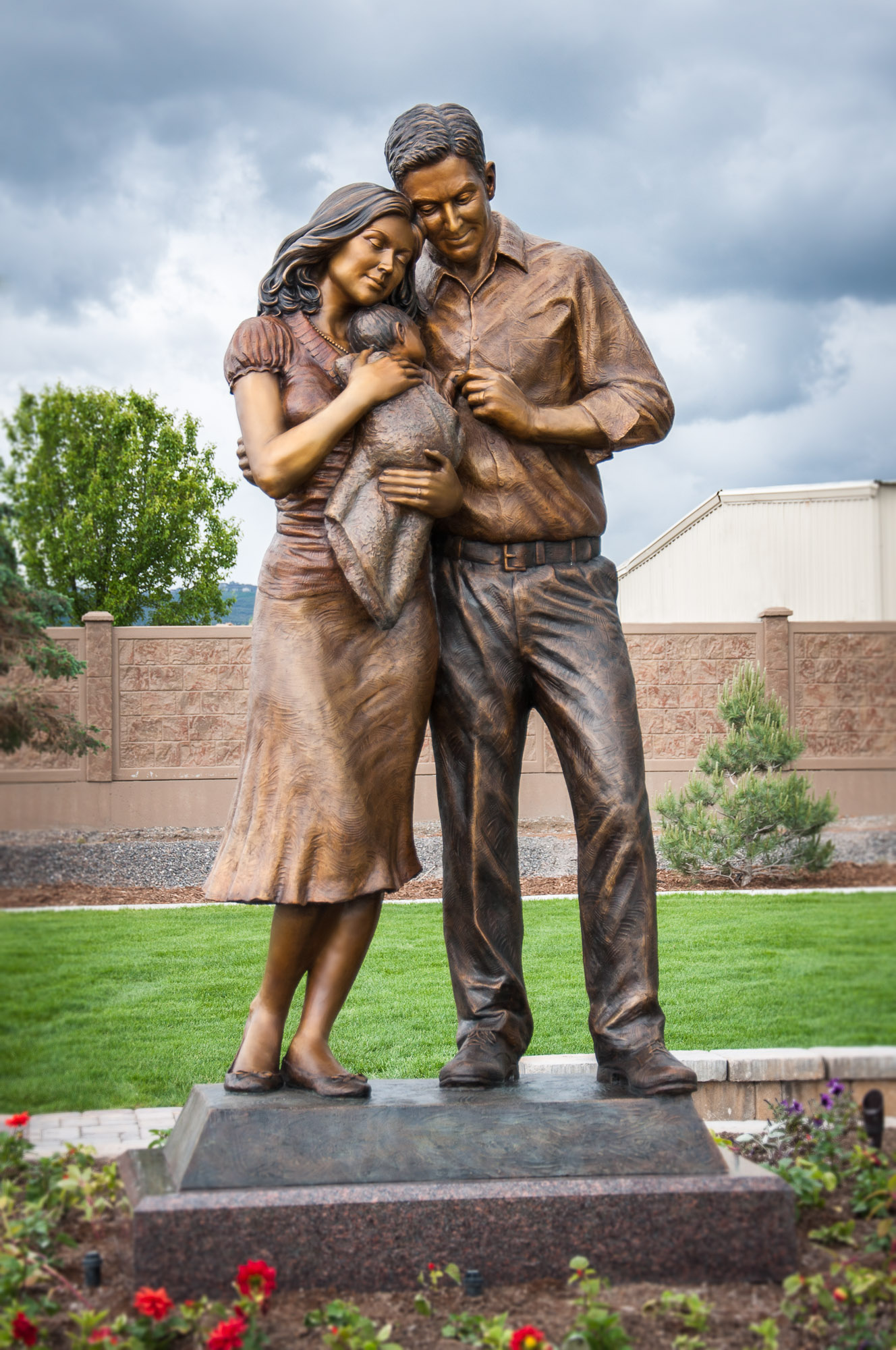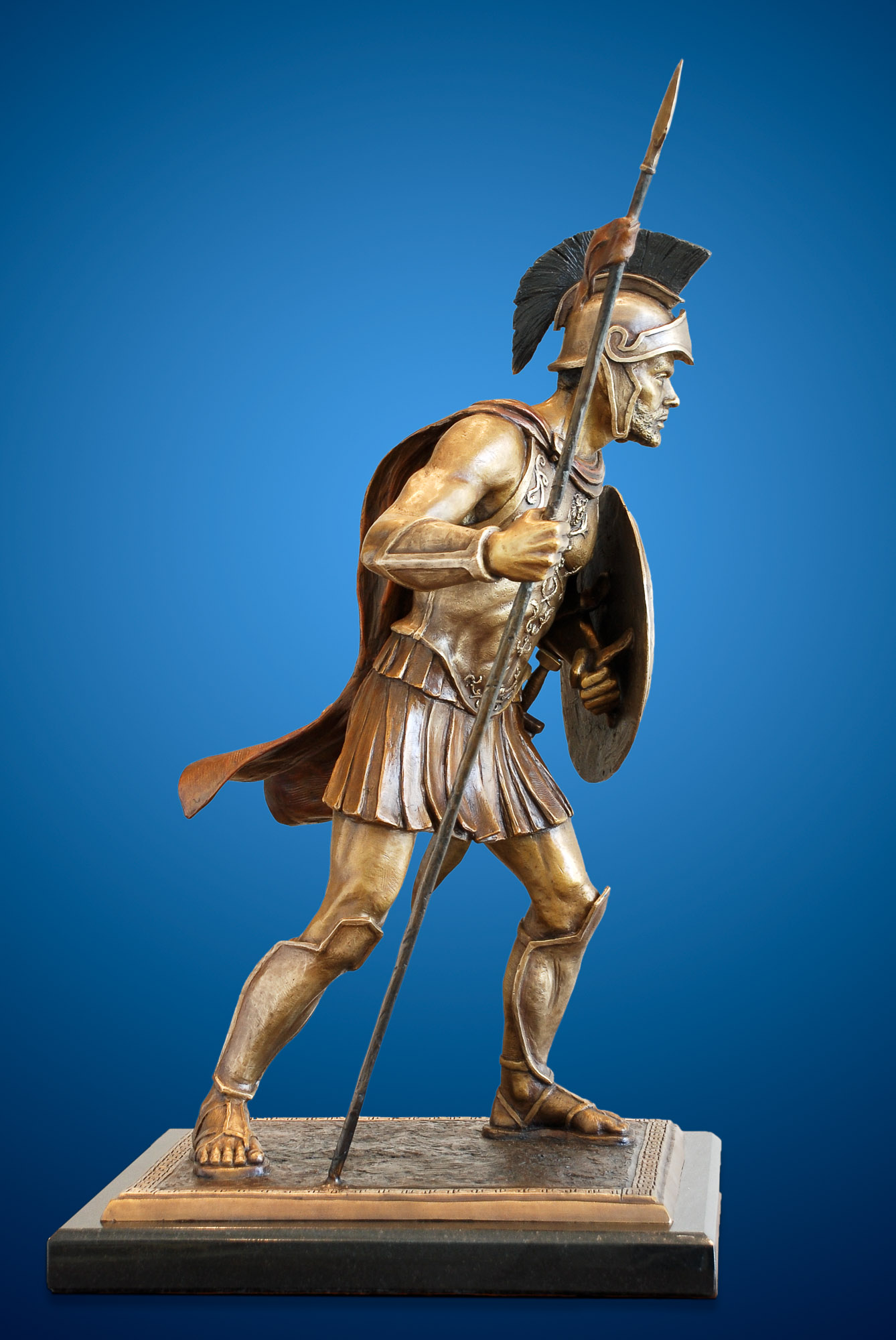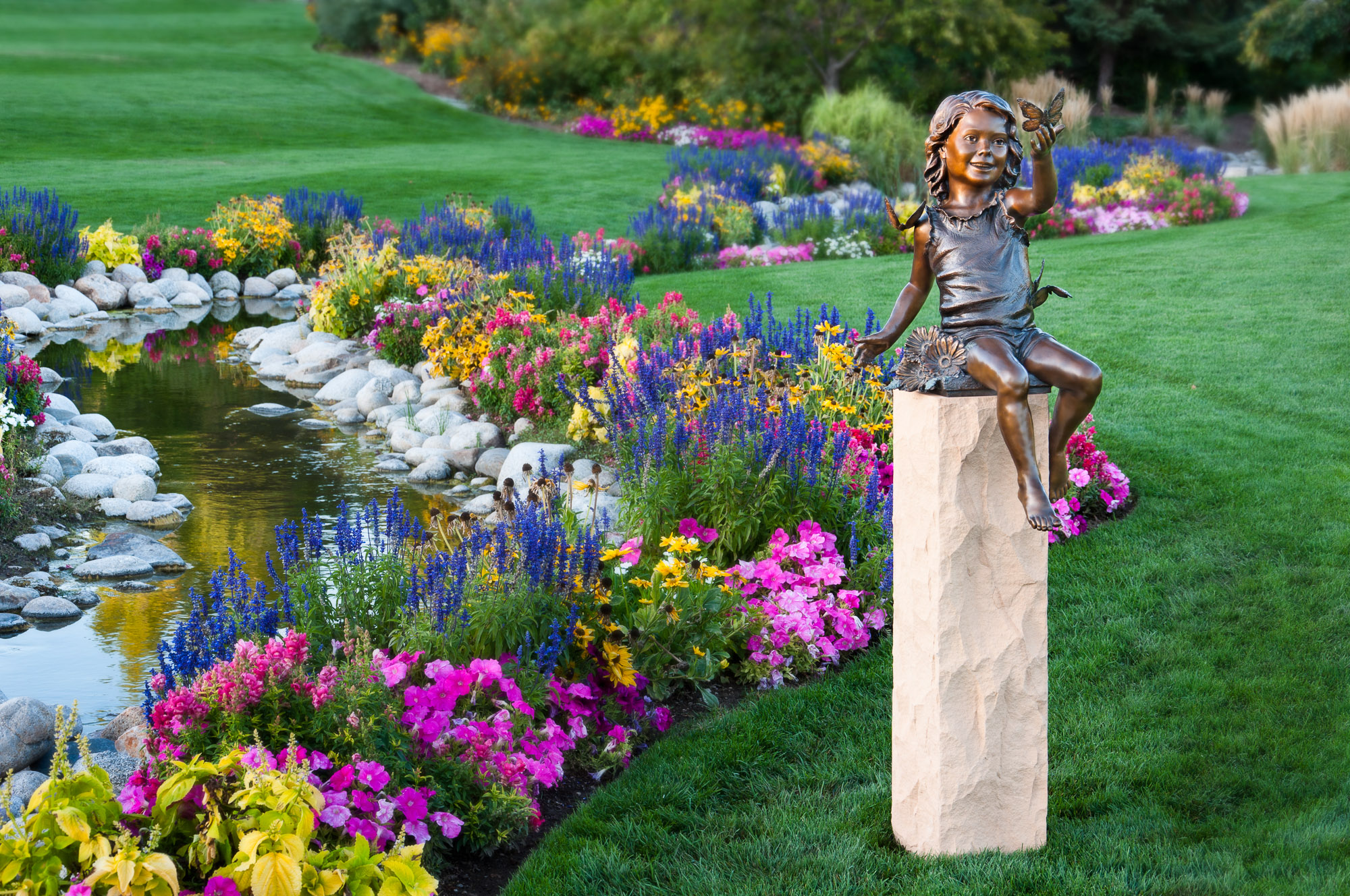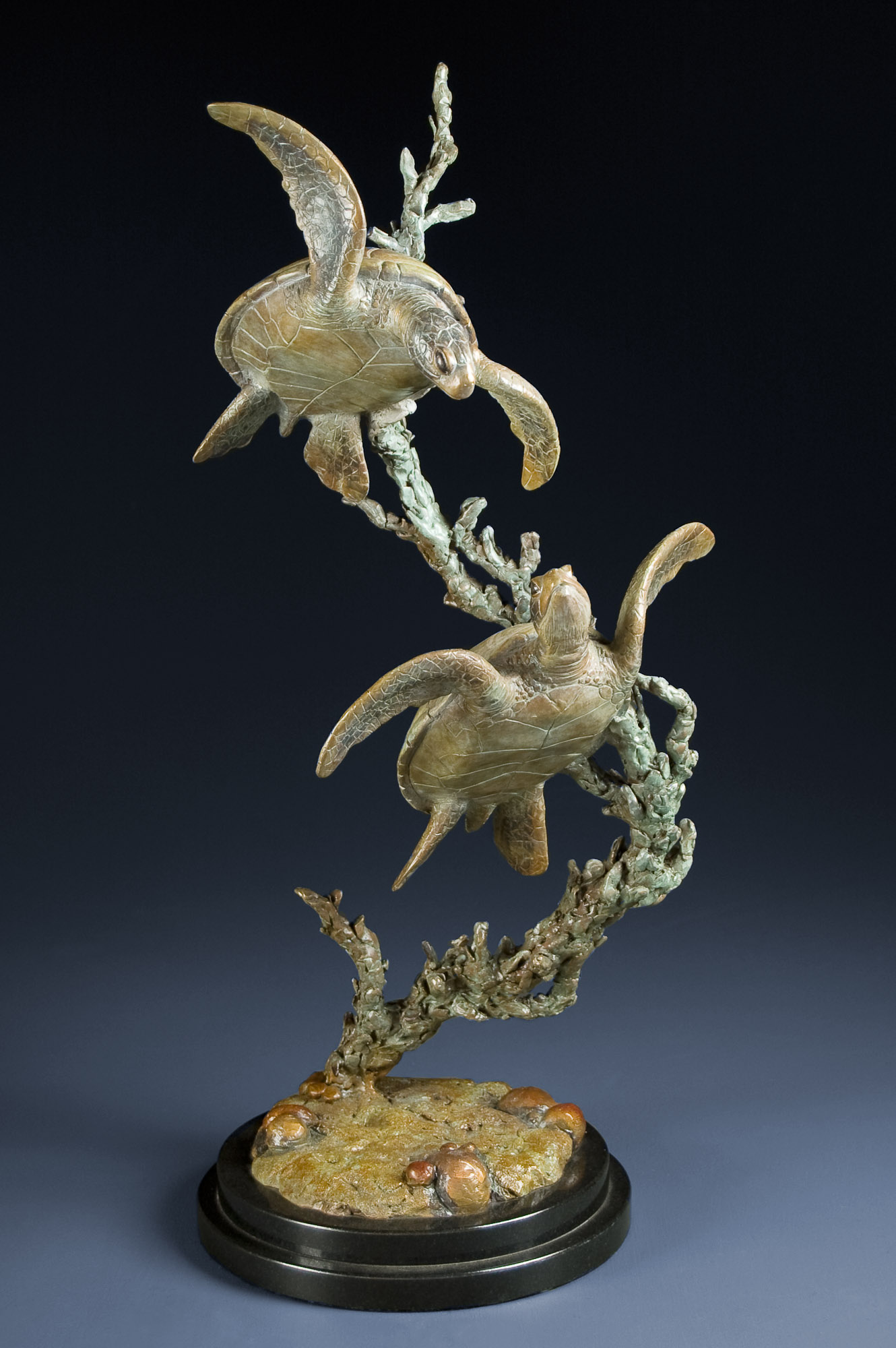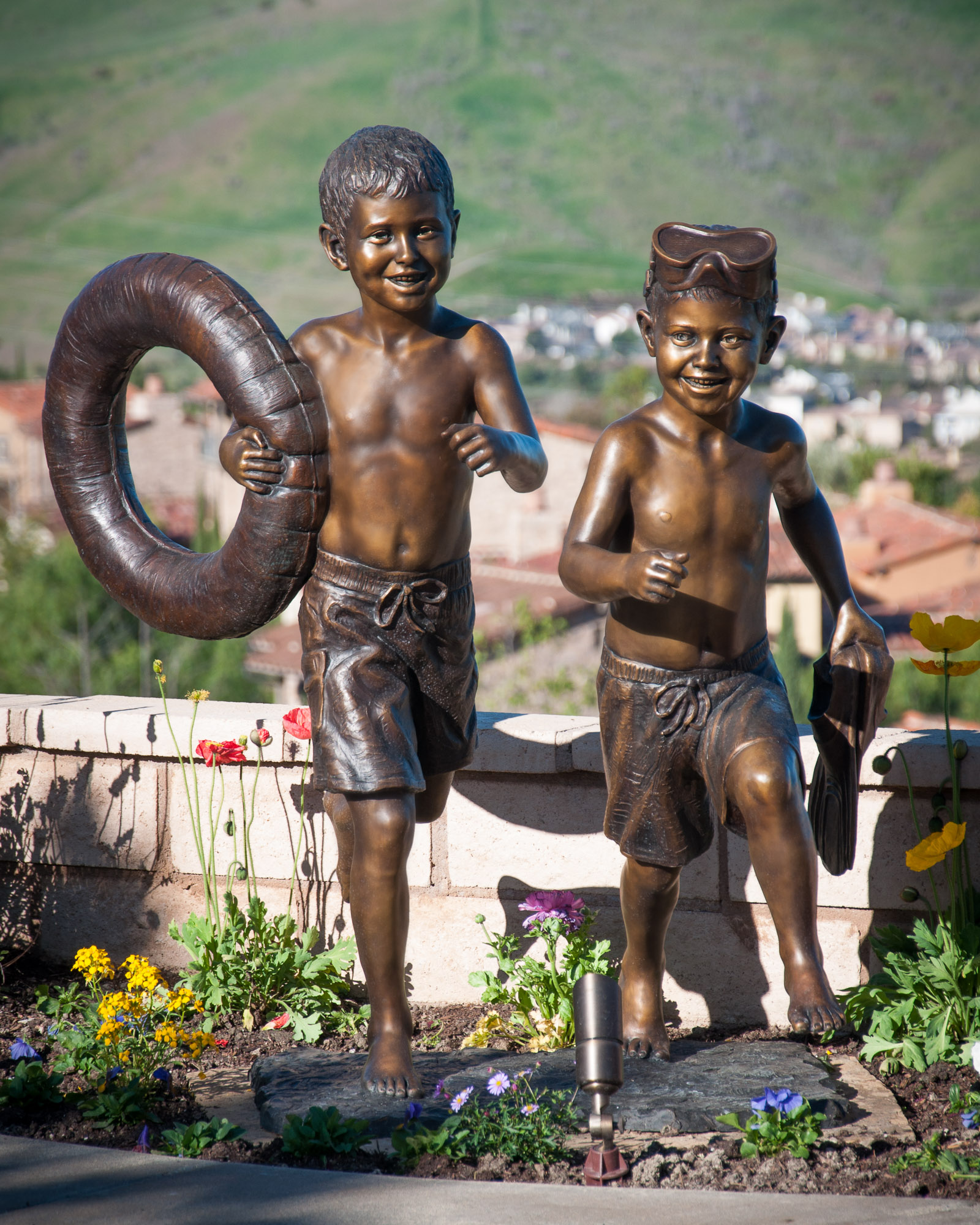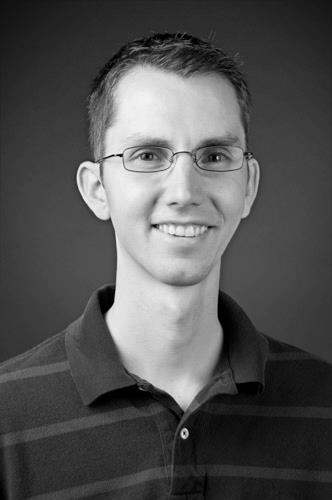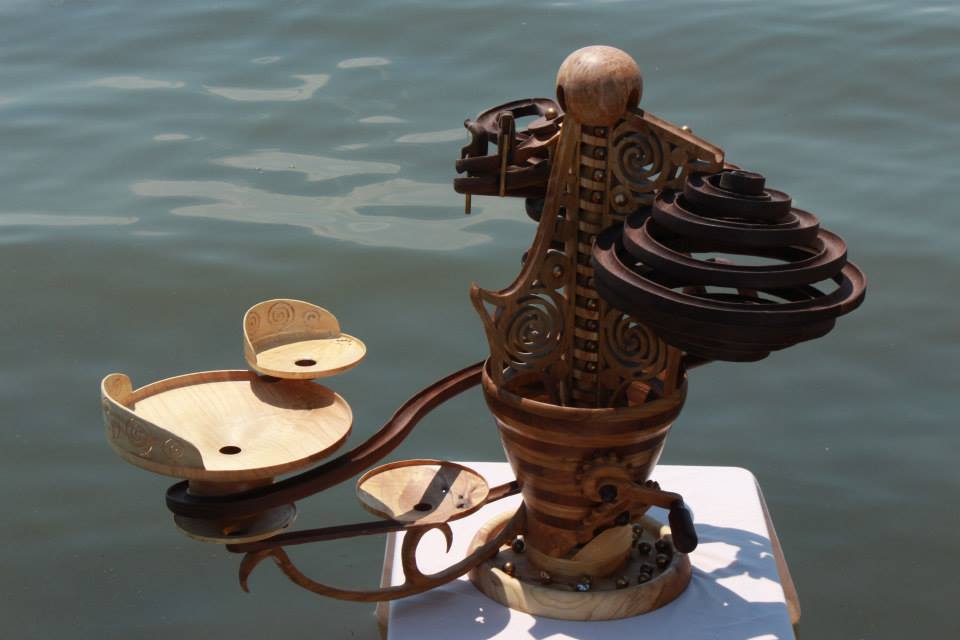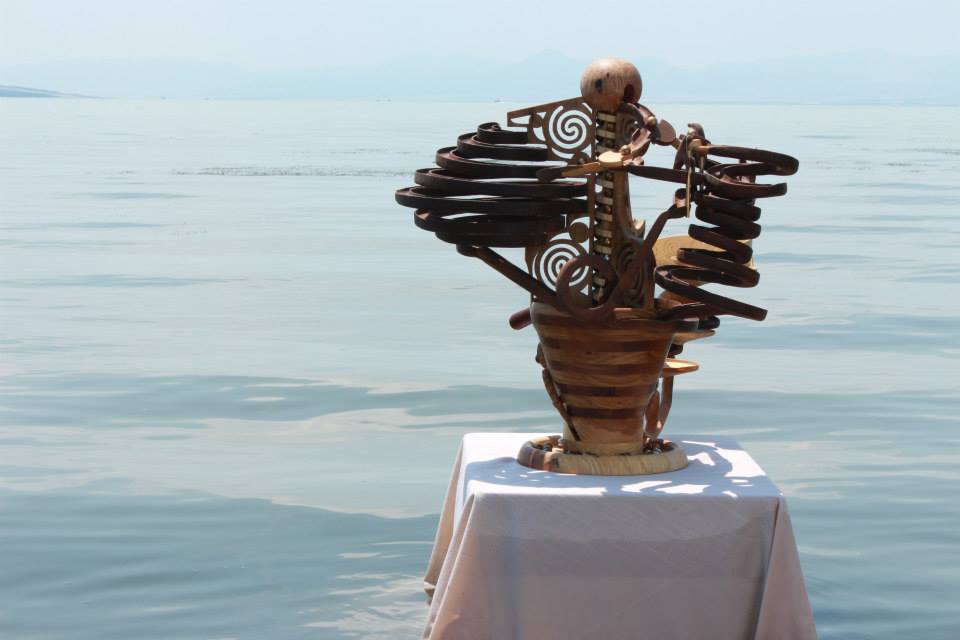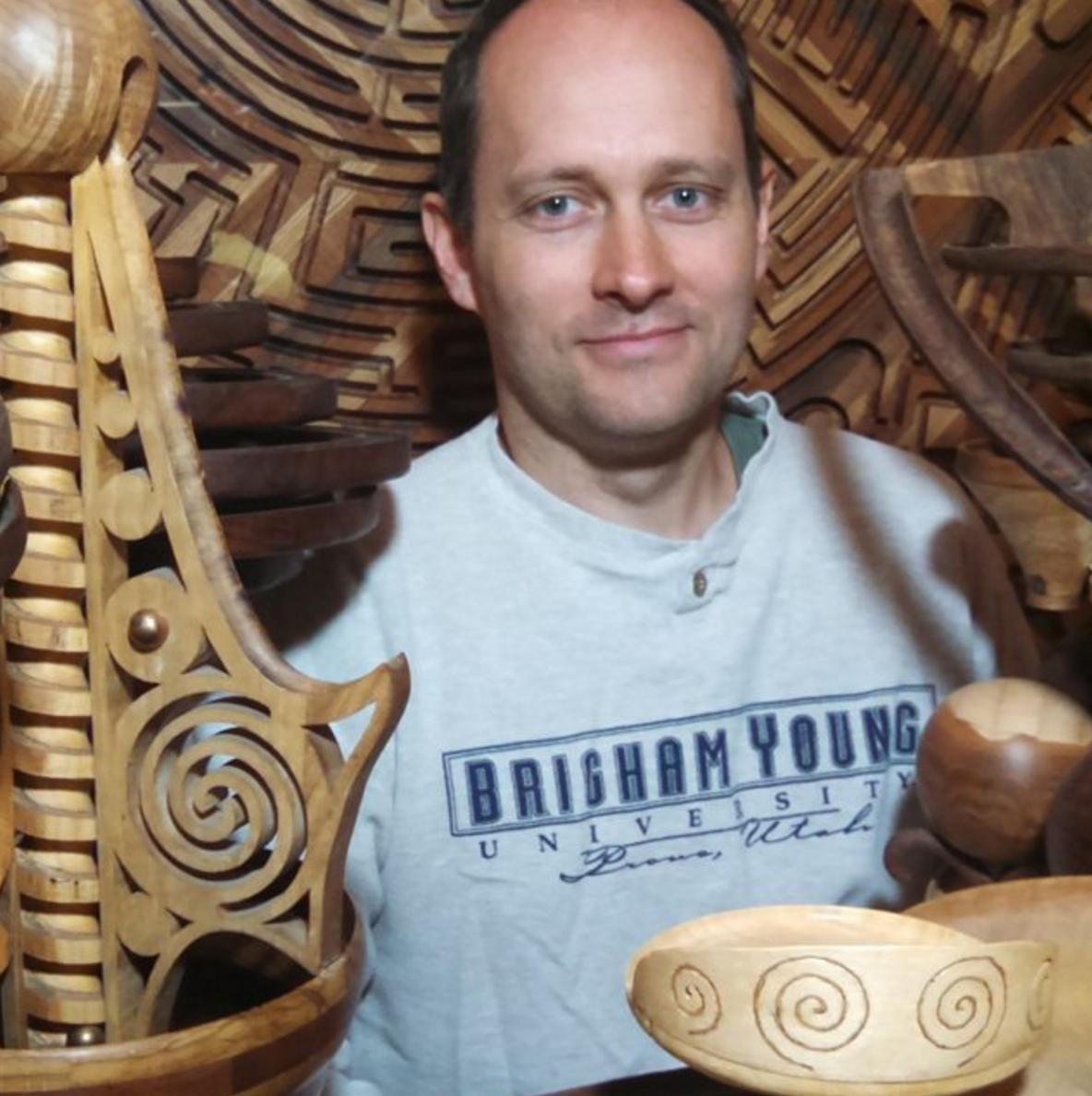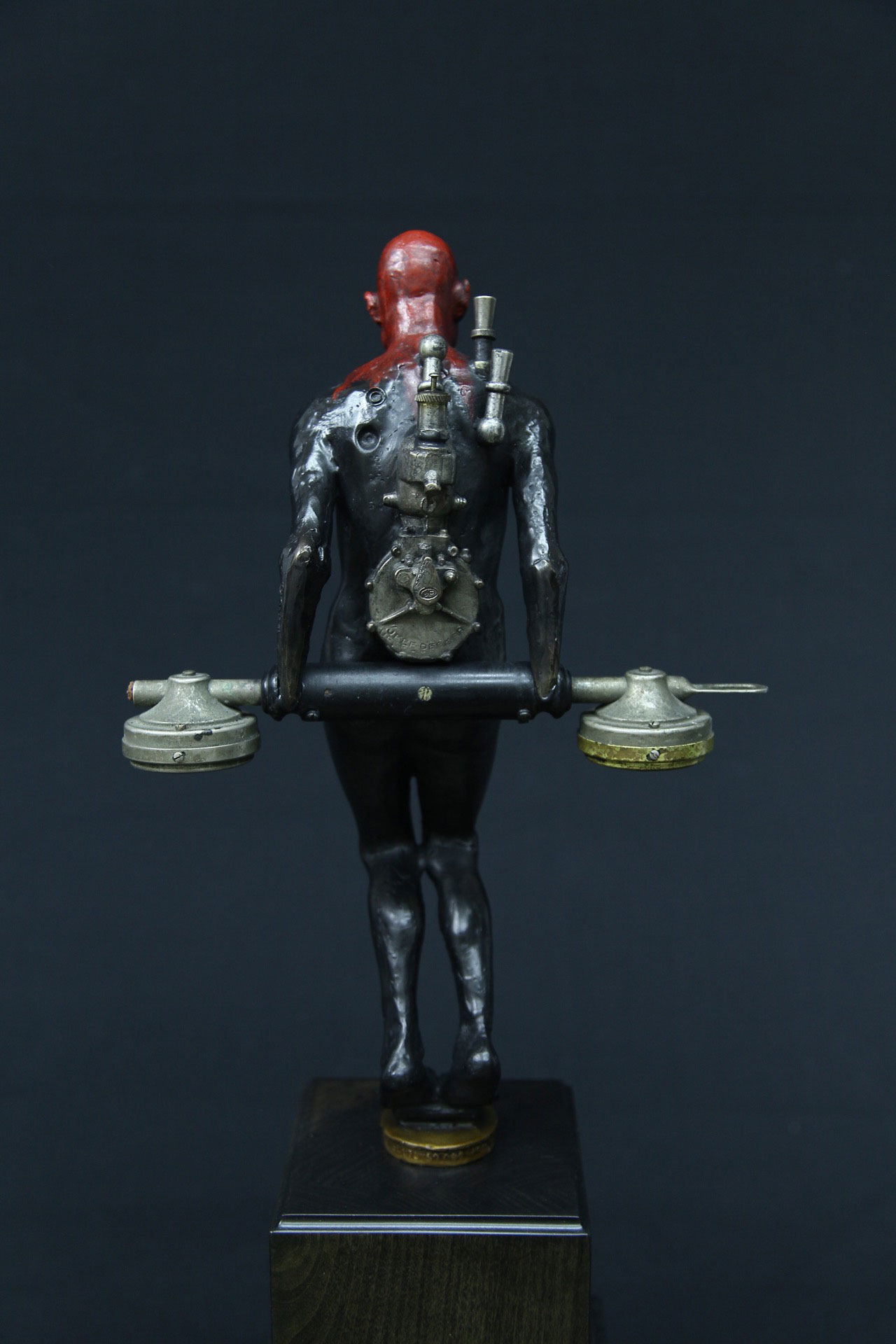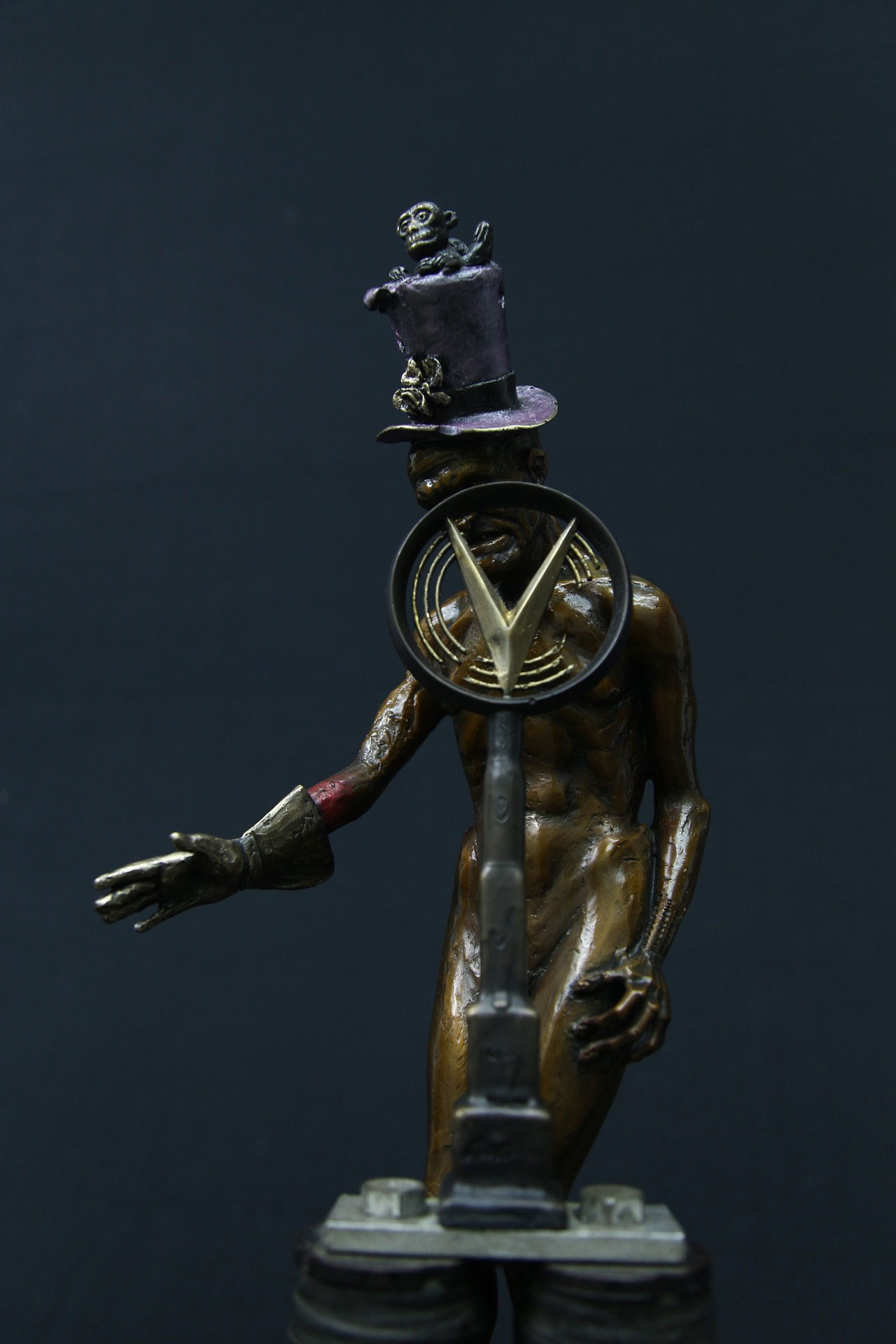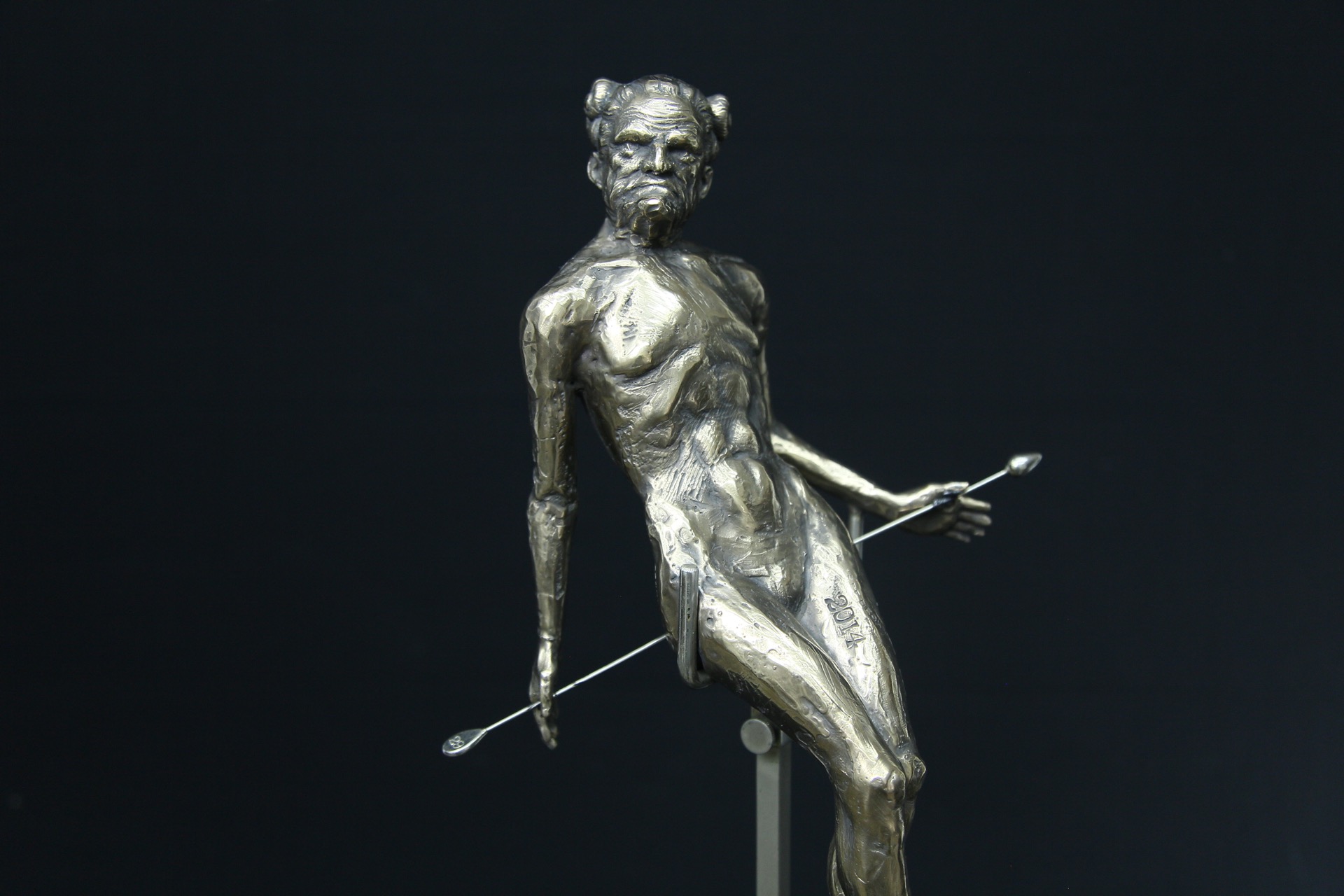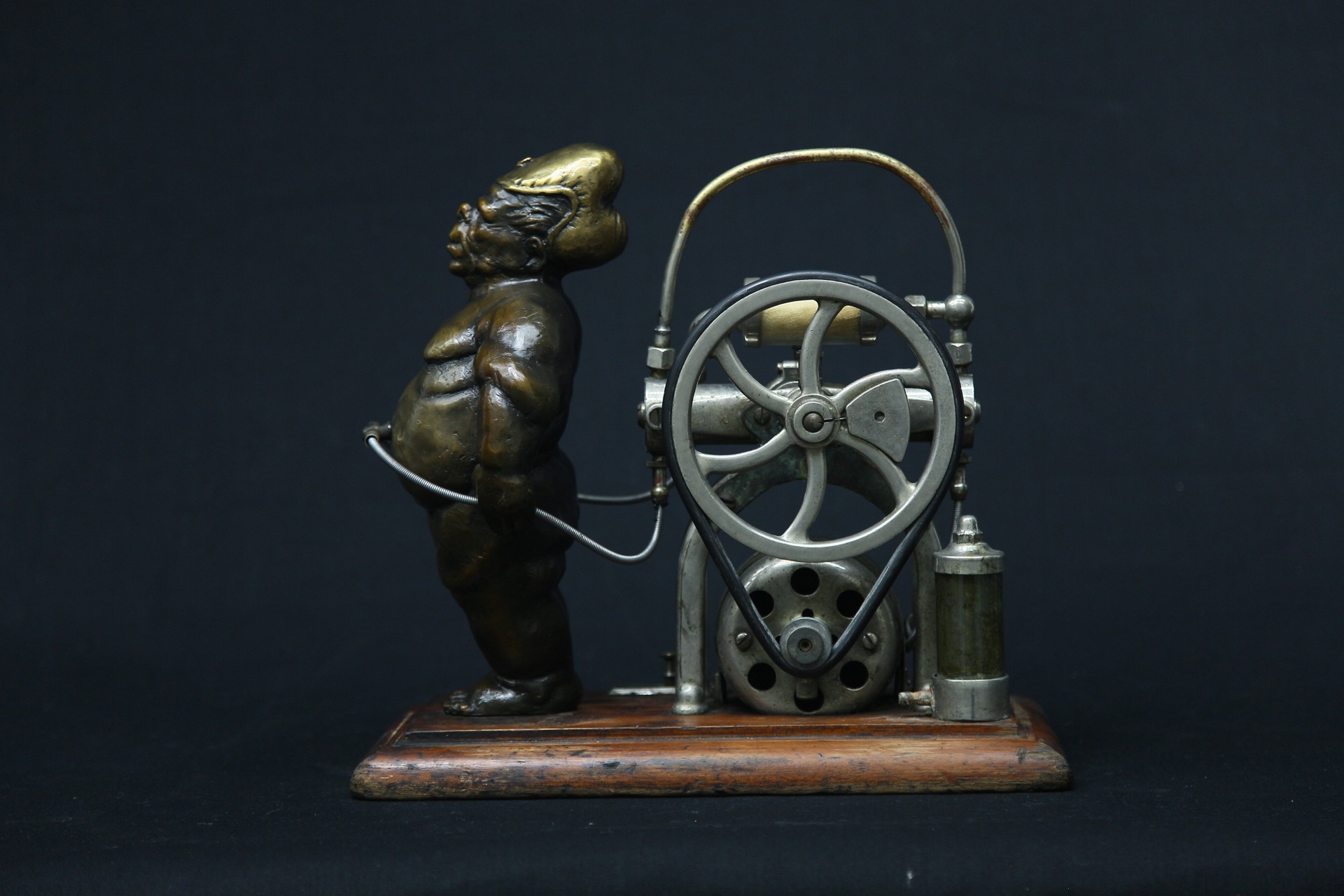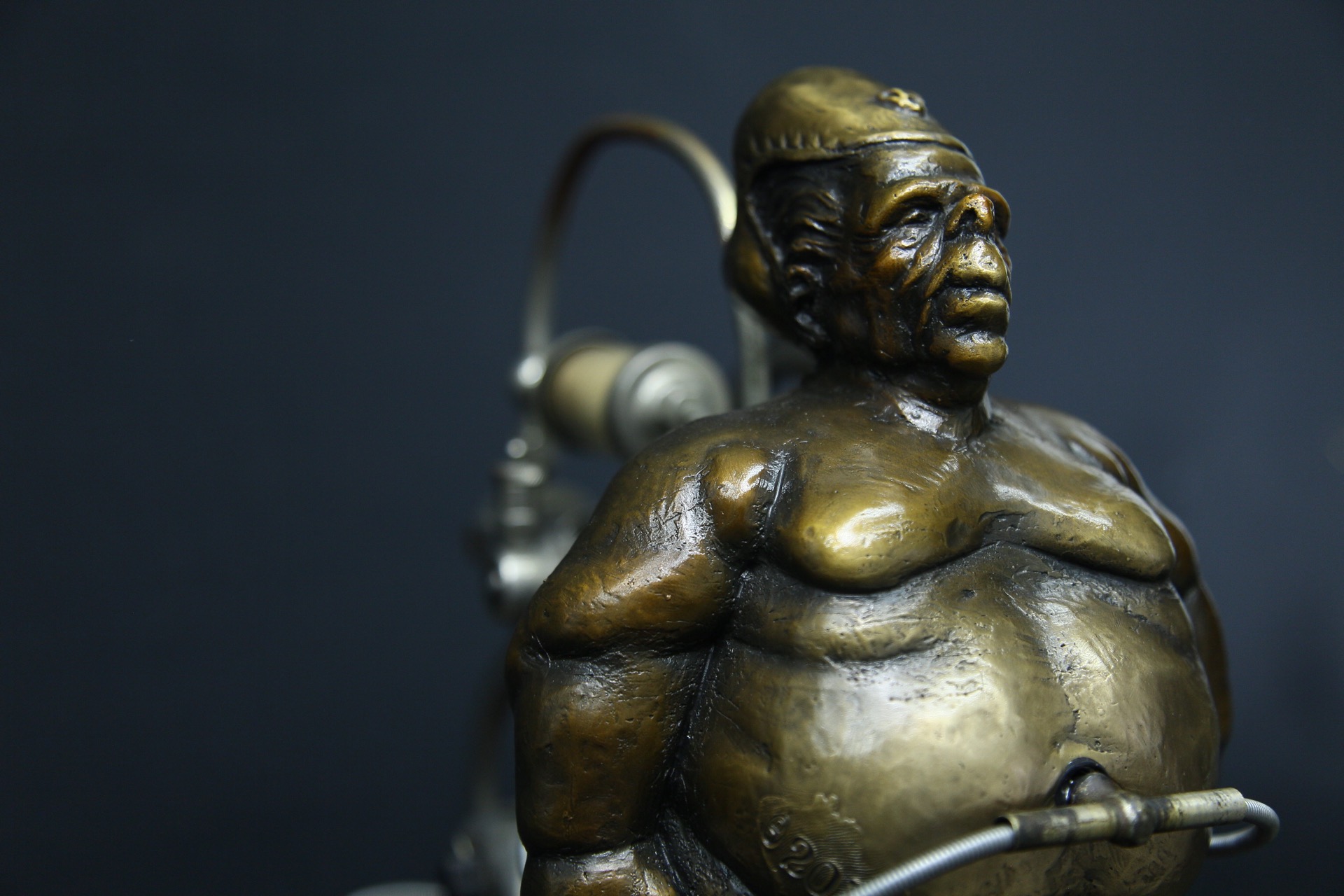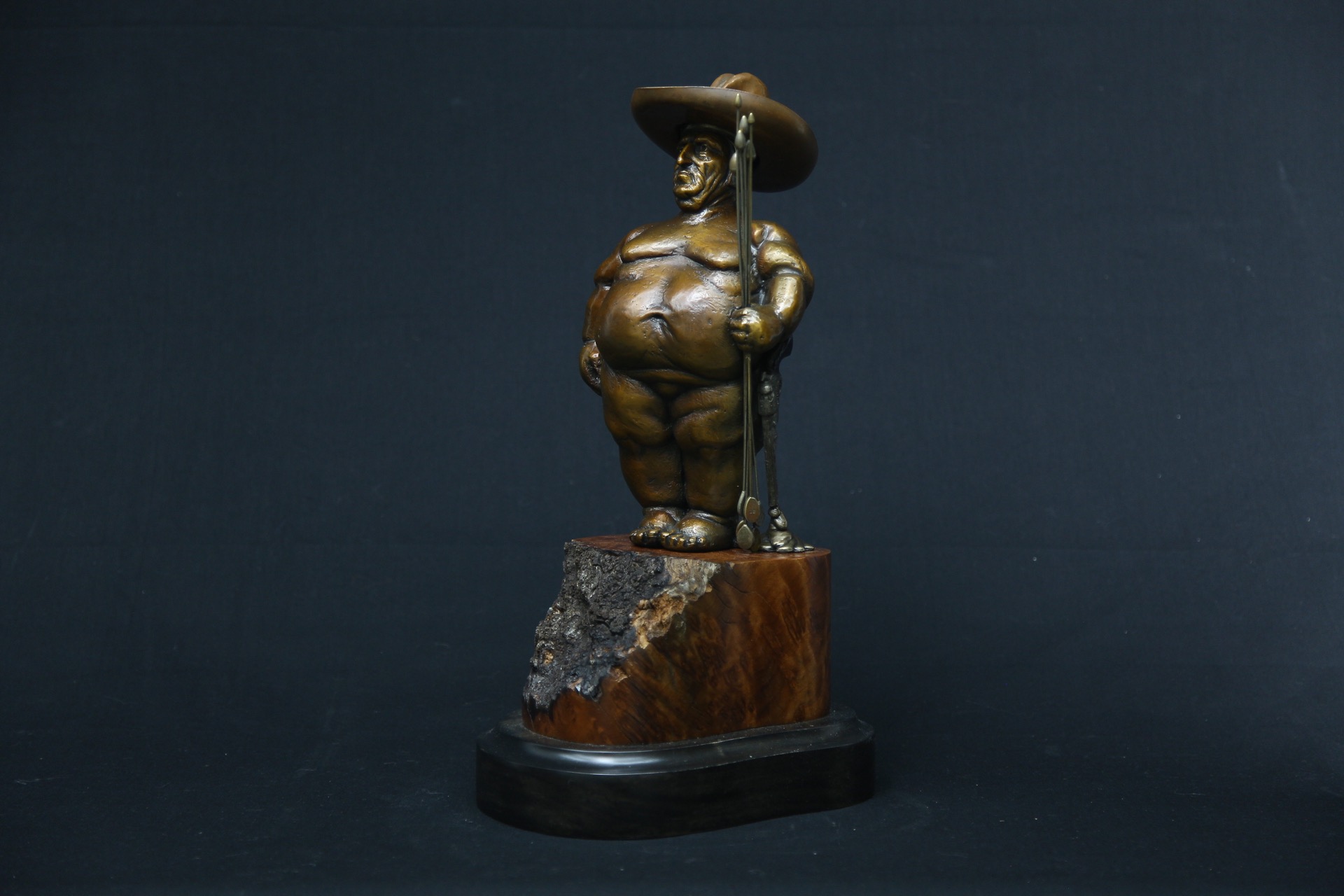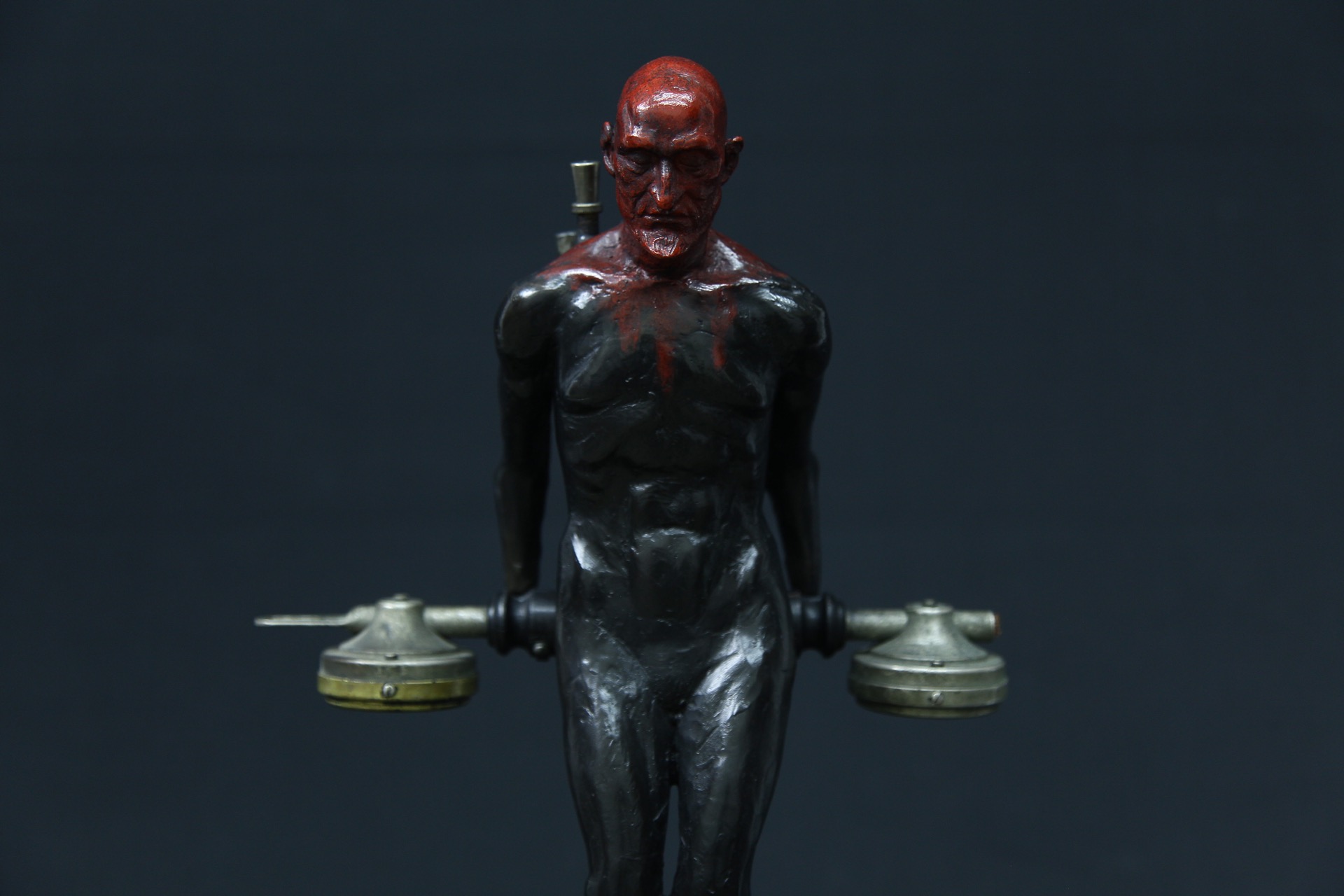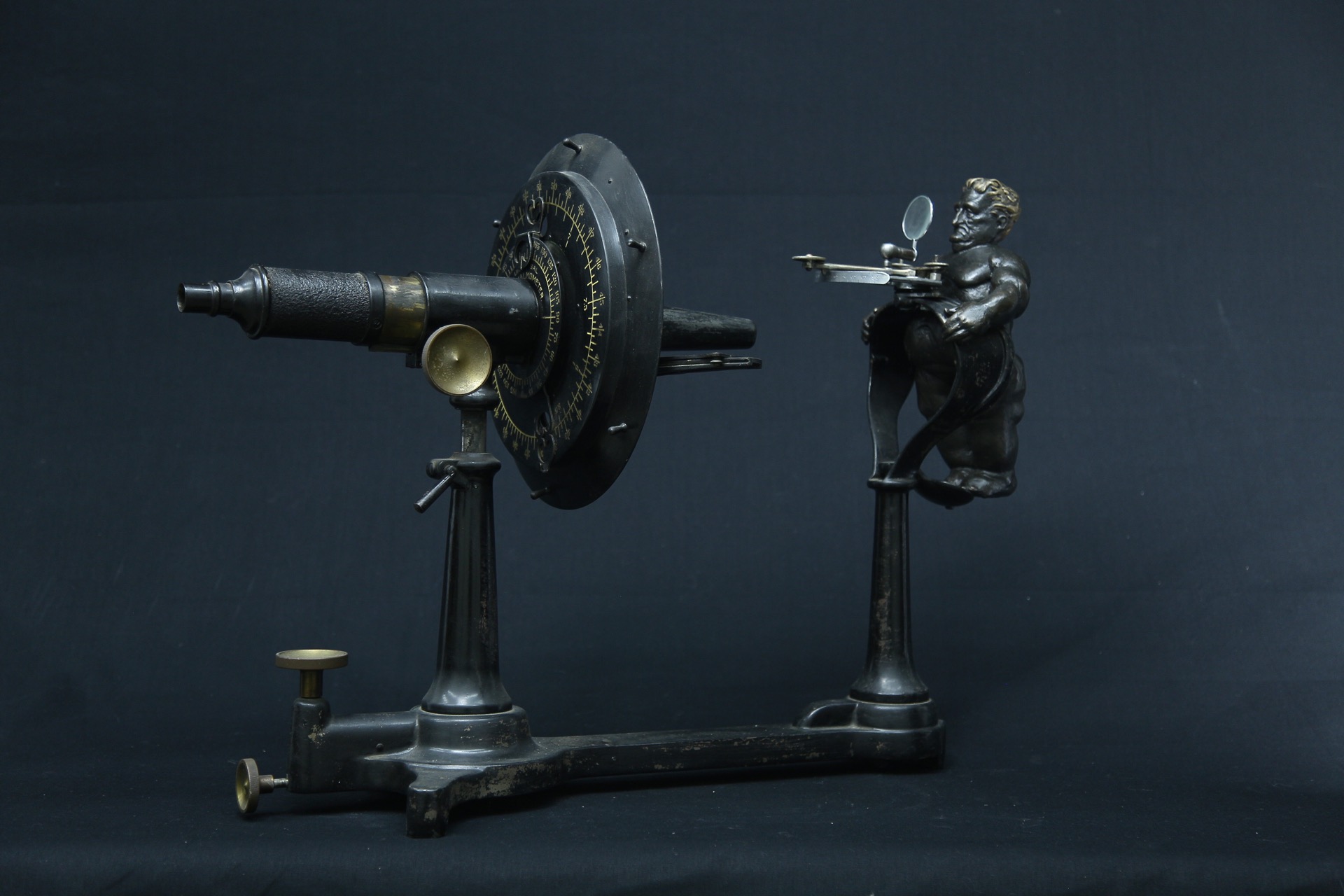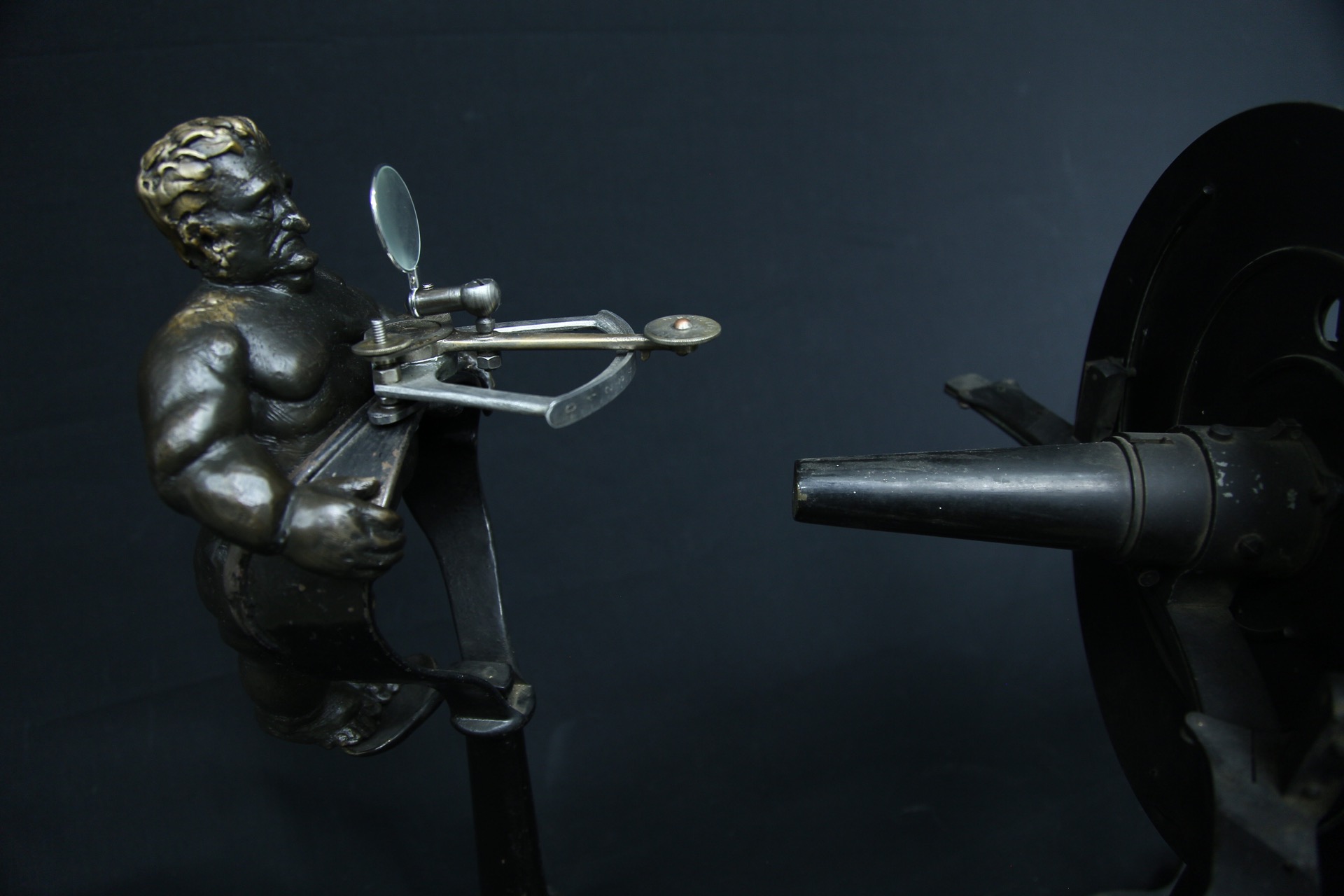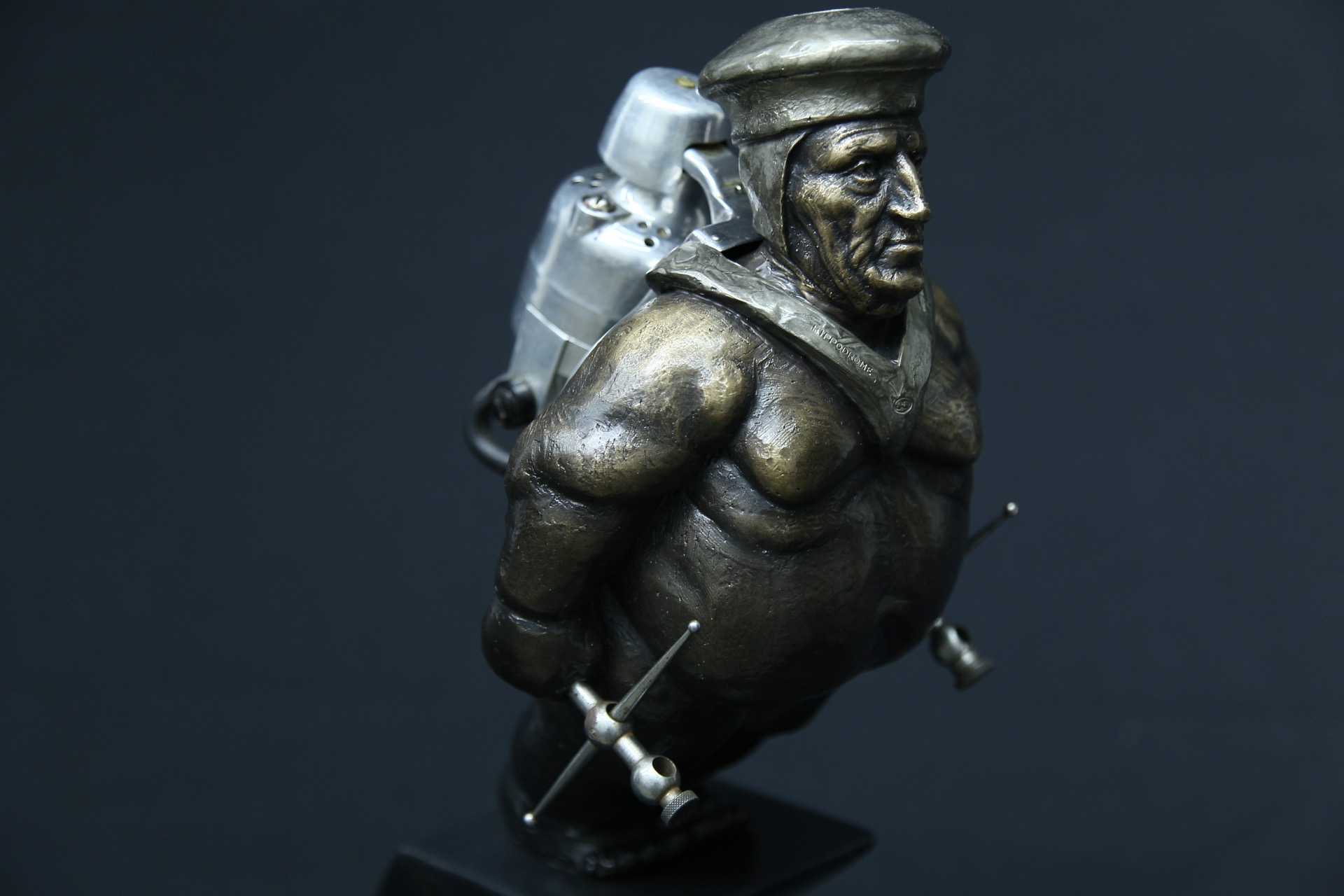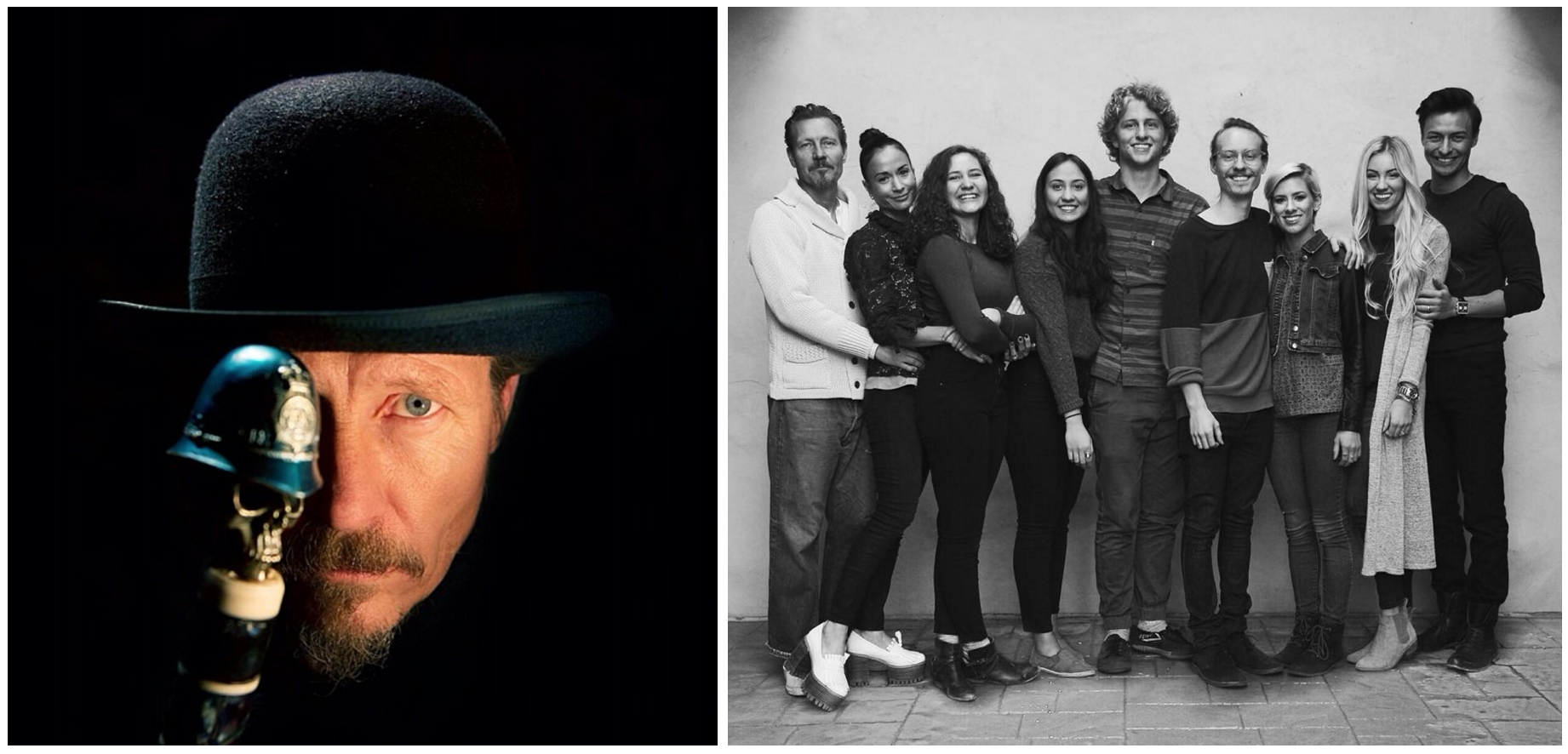Jeff Decker is a renowned sculptor widely known for his work on motorcycles. One of his most notable pieces is By the Horns, a 16-foot-tall, 5,000-pound, hill-climbing bronze biker at Milwaukee’s Harley-Davidson Museum (below). He was profiled previously on The Krakens for his series Hunting and Gathering. Decker lives with his family in Utah.
Talk about making the jump from artist to full-time career artist. I suppose the moment I became a career artist, was when I stopped working at the tiny restaurant my wife and I created, to work at a foundry. The foundry paid a few dollars an hour less than we paid our kitchen employees. Art classes at university didn’t motivate me, yet I kept finding excuses to stay in the arts. I suppose a selfish drive pushed me to stick with something that was counterintuitive to my own common sense. I was driven even more by hunting and gathering old stuff, than even creating, and the foundry offered a skill I could use in restoring motorcycles as well as casting sculpture. My bronzes have never garnered interest in the art world, but I did address a subject that most serious artist had ignored. It is easy to be relevant, when you are only fool doing what you do. Of course, any clever explanation I my provide for my art or myself, is just in hindsight. I never have much or had any method to my progress.
You once wrote, “There is nothing that embodies the urgency or our age and the modern synergy of man and machine better than a motorcycle and its rider.” Are there motorcycles you are still yearning to sculpt? How do you keep the pieces fresh and innovative? There is a reverence for Vermeer, a debt to Stan Wanlass and a nod to Elmyer De Hoya. Geiger, Odd Nurdrum, Rob’t Williams and the name dropping goes on… Murakami tickles me today and I’ll tell you something different tomorrow. DaVinci inspires more than any other. Obviously. But for me, it is not the Mona Lisa nor his religious work. His mechanical doodlings move me most. His grotesque sketches. The ideas he never brought to fruition. With the passing of centuries I am able to steal his ideas and marry them to mechanical wonders that now exist. So perhaps the motorcycle itself will not always be my only muse, but I have not lost my love for the damn thing yet.

